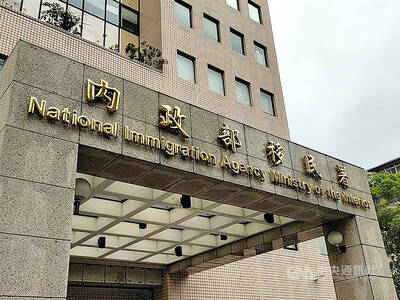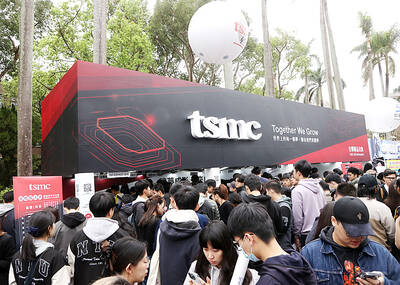Wardens of boroughs near the legislature in Taipei’s Zhongzheng District (中正) are calling on Taipei Mayor Ko Wen-je (柯文哲) to address disturbances to local residents from ongoing protests.
The city should relocate the legislature or financially compensate residents if moving the offices is impossible, the wardens said.
Legislative Yuan Secretary-General Lin Chih-chia (林志嘉) suggested first collecting ideas from all those affected, but added that financial compensation would be difficult and “seem strange.”
Xingfu Borough (幸福) Warden Su Hung-jen (蘇宏仁), who has served the borough for 11 terms over 44 years, said he has seen the number of protests at the legislature grow over the past few years.
While residents respect the right of others to protest, they have seen their quality of life decline as protests grow longer and bigger, requiring a larger area to be blocked off, Su said.
“Every time an area is cordoned off, the phone rings off the hook,” Su said, adding that residents often find themselves unable to get in and out of their homes.
Others find themselves faced with the unexpected cost of taking taxis when they are unable to get their cars out of parkings due to barriers, he said.
Dongmen Borough (東門) Warden Lee Shih-tsung (李世宗) also complained of traffic disruptions and noise disturbance from protests, as well as residents’ fear that thieves will take advantage of the chaos during protests.
“The legislature has come to be the same as a funeral parlor or garbage incinerator: Nobody wants to live near it,” Lee said.
Taipei Department of Civil Affairs Director Lan Shih-tsung (藍世聰) said he would raise the issue with the legislature after the next Ministry of the Interior meeting.
Democratic Progressive Party caucus secretary-general Ho Hsin-chun (何欣純) echoed Lin’s sentiment that providing compensation for residents would be difficult, given that there is no legal precedent for such an arrangement.
Ho apologized to residents and store owners for the disturbances and suggested a meeting to discuss more “technical” ways of solving the issue.
Relocation has already been discussed for a long time, Chinese Nationalist Party (KMT) caucus secretary-general Lee Yen-hsiu (李彥秀) said, adding that there must be a consensus between the central and local governments before relocation would be possible.
There is no historical example of compensation being provided, Lee said, adding that Lin and Legislative Speaker Su Jia-chyuan (蘇嘉全) should meet to discuss options to reduce the toll of protests on residents.
New Power Party caucus convener Hsu Yung-ming (徐永明) said that protests clearly affect local businesses and residents, so the government should arrange compensation for those affected as the budget allows.

CAUTION: Based on intelligence from the nation’s security agencies, MOFA has cautioned Taiwanese travelers about heightened safety risks in China-friendly countries The Ministry of Foreign Affairs (MOFA) yesterday urged Taiwanese to be aware of their safety when traveling abroad, especially in countries that are friendly to China. China in June last year issued 22 guidelines that allow its courts to try in absentia and sentence to death so-called “diehard” Taiwanese independence activists, even though Chinese courts have no jurisdiction in Taiwan. Late last month, a senior Chinese official gave closed-door instructions to state security units to implement the guidelines in countries friendly to China, a government memo and a senior Taiwan security official said, based on information gathered by Taiwan’s intelligence agency. The

The National Immigration Agency (NIA) said yesterday that it will revoke the dependent-based residence permit of a Chinese social media influencer who reportedly “openly advocated for [China’s] unification through military force” with Taiwan. The Chinese national, identified by her surname Liu (劉), will have her residence permit revoked in accordance with Article 14 of the “Measures for the permission of family- based residence, long-term residence and settlement of people from the Mainland Area in the Taiwan Area,” the NIA said in a news release. The agency explained it received reports that Liu made “unifying Taiwan through military force” statements on her online

Taiwan Semiconductor Manufacturing Co (TSMC), the world’s largest contract chipmaker, said yesterday that it is looking to hire 8,000 people this year, at a time when the tech giant is expanding production capacity to maintain its lead over competitors. To attract talent, TSMC would launch a large-scale recruitment campaign on campuses across Taiwan, where a newly recruited engineer with a master’s degree could expect to receive an average salary of NT$2.2 million (US$60,912), which is much higher than the 2023 national average of NT$709,000 for those in the same category, according to government statistics. TSMC, which accounted for more than 60 percent

Tung Tzu-hsien (童子賢), a Taiwanese businessman and deputy convener of the nation’s National Climate Change Committee, said yesterday that “electrical power is national power” and nuclear energy is “very important to Taiwan.” Tung made the remarks, suggesting that his views do not align with the country’s current official policy of phasing out nuclear energy, at a forum organized by the Taiwan People’s Party titled “Challenges and Prospects of Taiwan’s AI Industry and Energy Policy.” “Taiwan is currently pursuing industries with high added- value and is developing vigorously, and this all requires electricity,” said the chairman